Abstract
To study the role of circulating natriuretic factors in the postobstructive diuresis that occurs after relief of bilateral, but not unilateral ureteral ligation, cross-circulation was carried out between normal recipient rats and donor rats have either 24-h bilateral (BUL) or unilateral (UUL) ureteral ligation. With BUL donors, there was a rapid marked increase in sodium and water excretion in the recipient rats, sustained for 80-140 min, with a peak approximately 10 times control values. With UUL donors, no significant natriuretic response occurred. Changes in glomerular filtration rate, renal plasma flow, blood pressure, hematocrit, or circulating levels of aldosterone or Pitressin did not explain the diuresis-natriuresis produced by cross-circulation with BUL donors. Differences in the intrinsic renal damage produced by bilateral as compared to unilateral ureteral obstruction did not appear to account for this response, since UUL donors given an acute urea load and urine reinfusion caused a similar diuresis-natriuresis. Moreover, normal donor rats given a urea load also caused a diuresis-natriuresis nearly equal to that produced by BUL rats, and the relationship between increased urea excretion and sodium excretion or urine flow in the recipients was not different in the two groups. Total urine reinfusion for 3 h in donor rats produced a significant, although less marked, diuresis-natriuresis in recipient animals, with only a slight elevation of the blood urea nitrogen level, much less increase in urea excretion rate, and no significant relationship between urea excretion and sodium excretion or urine flow. The results indicate that potent natriuretic factors, which act by decreasing the tubular reabsorption of sodium and water, are present in the blood of rats with bilateral, but not unilateral, ureteral ligation. High blood and urine urea levels appear to be the factors responsible for the marked natriuresis-diuresis occurring in normal rats during cross-circulation with BUL donors, although suggestive evidence of other natriuretic factors in urine reinfused intravenously was also obtained. The data suggest that urea osmotic diuresis is an important mechanism for determining the striking difference between the postobstructive diuresis observed after relief of bilateral as compared to unilateral ureteral ligation.
Full text
PDF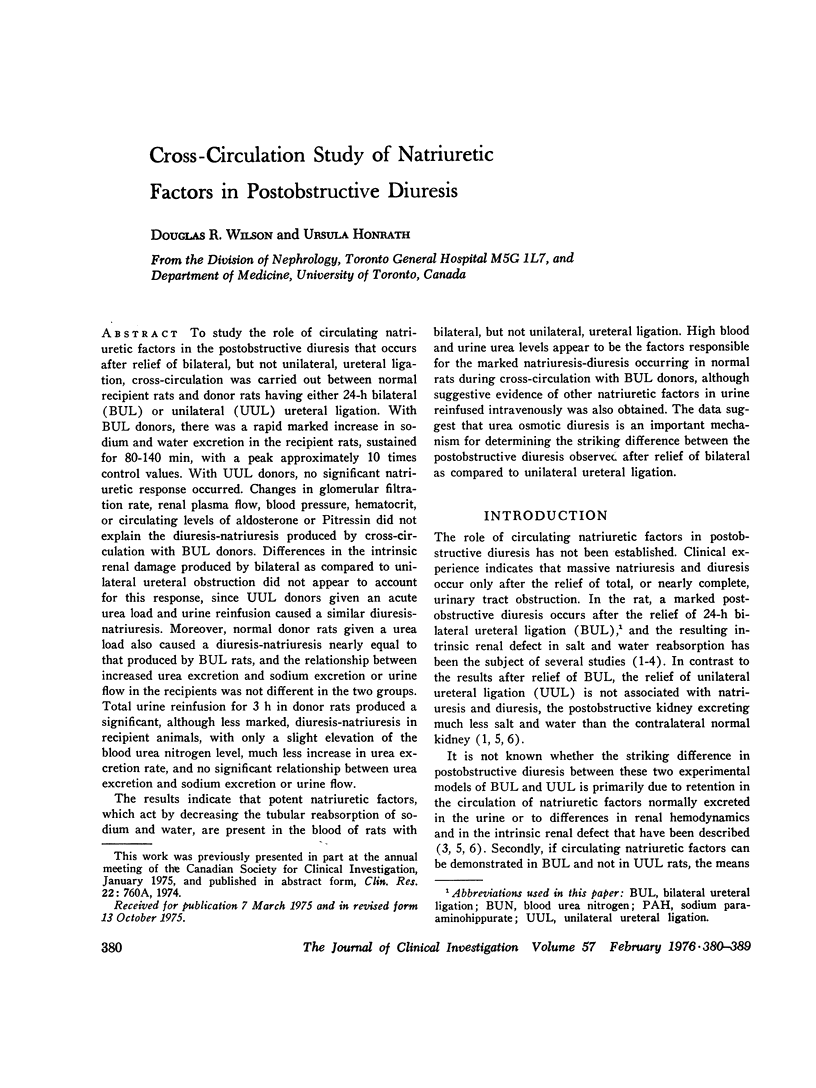
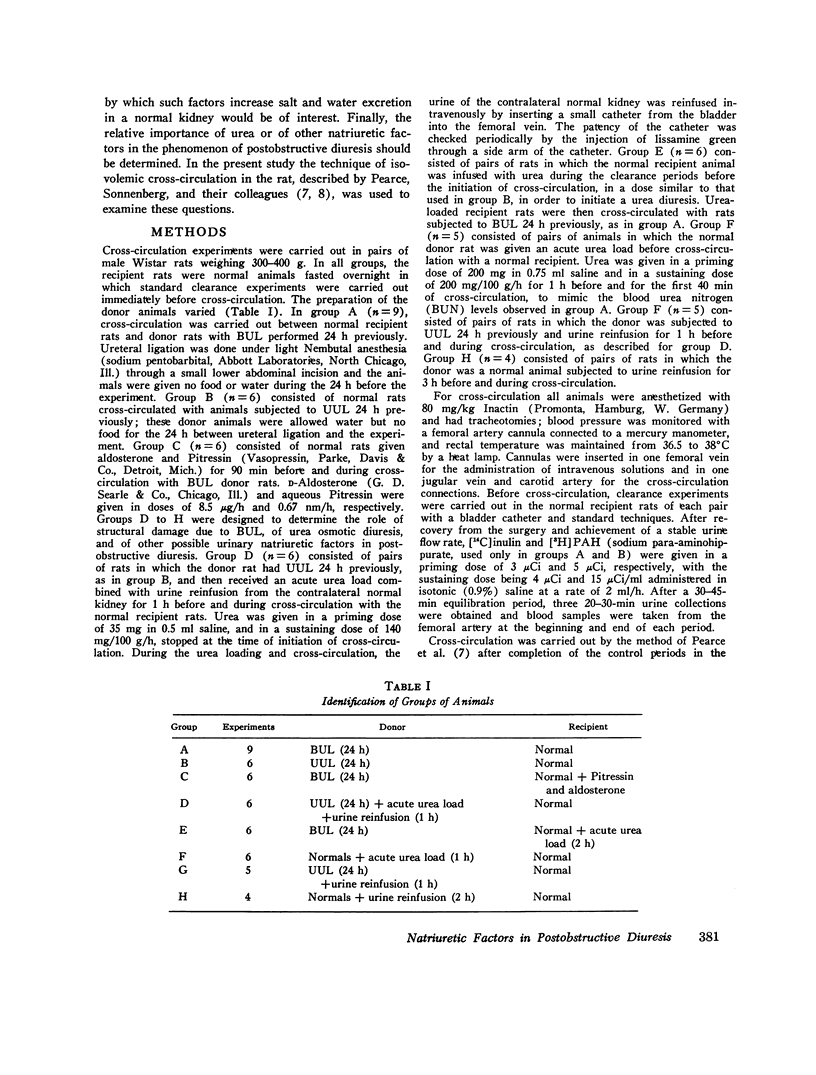
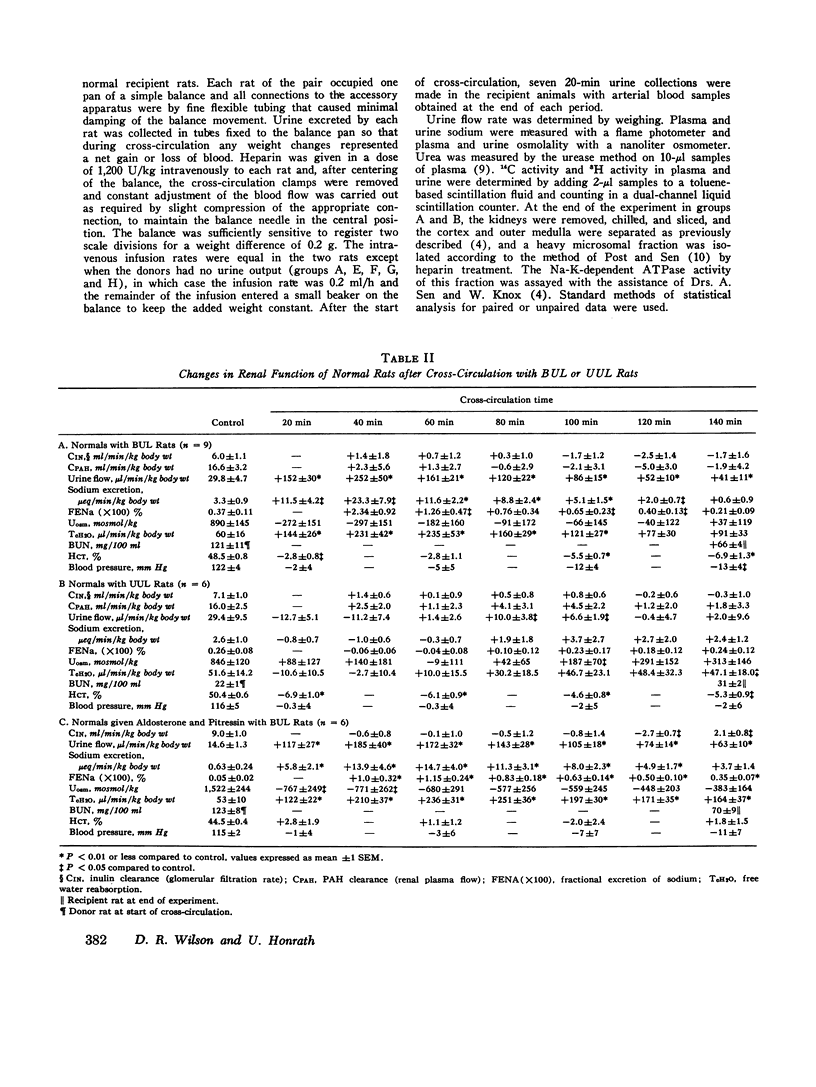

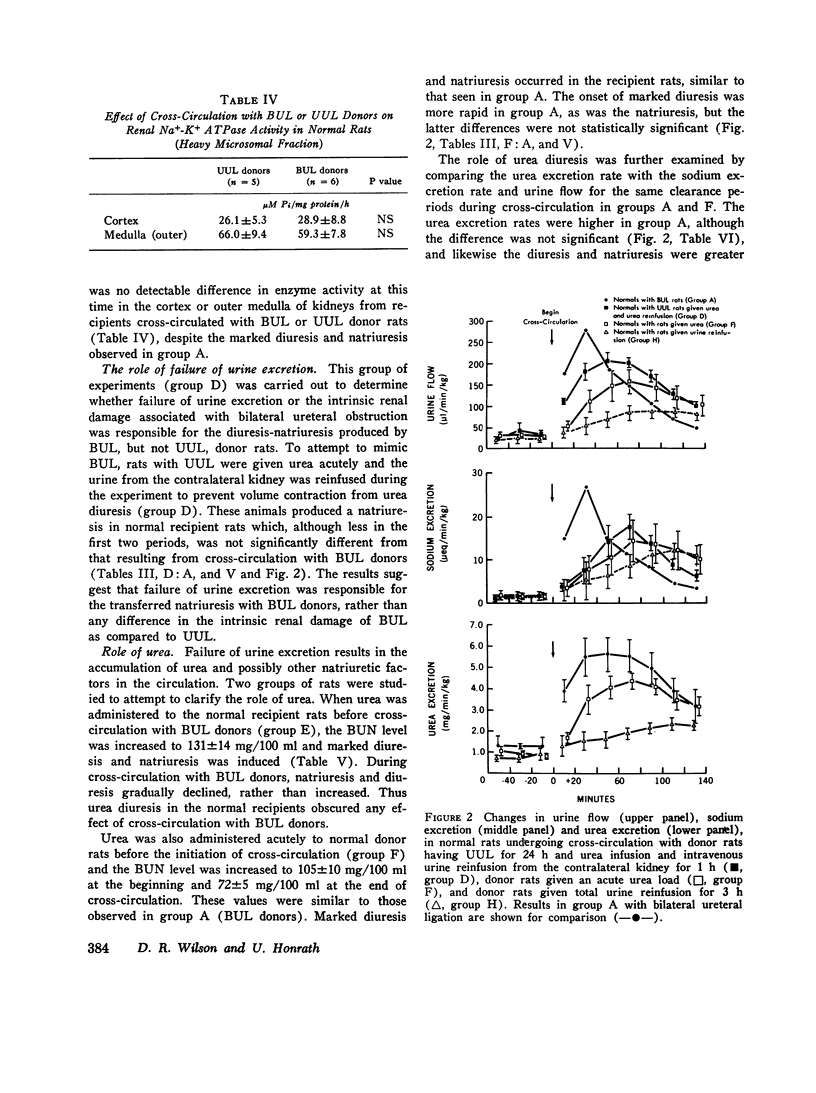
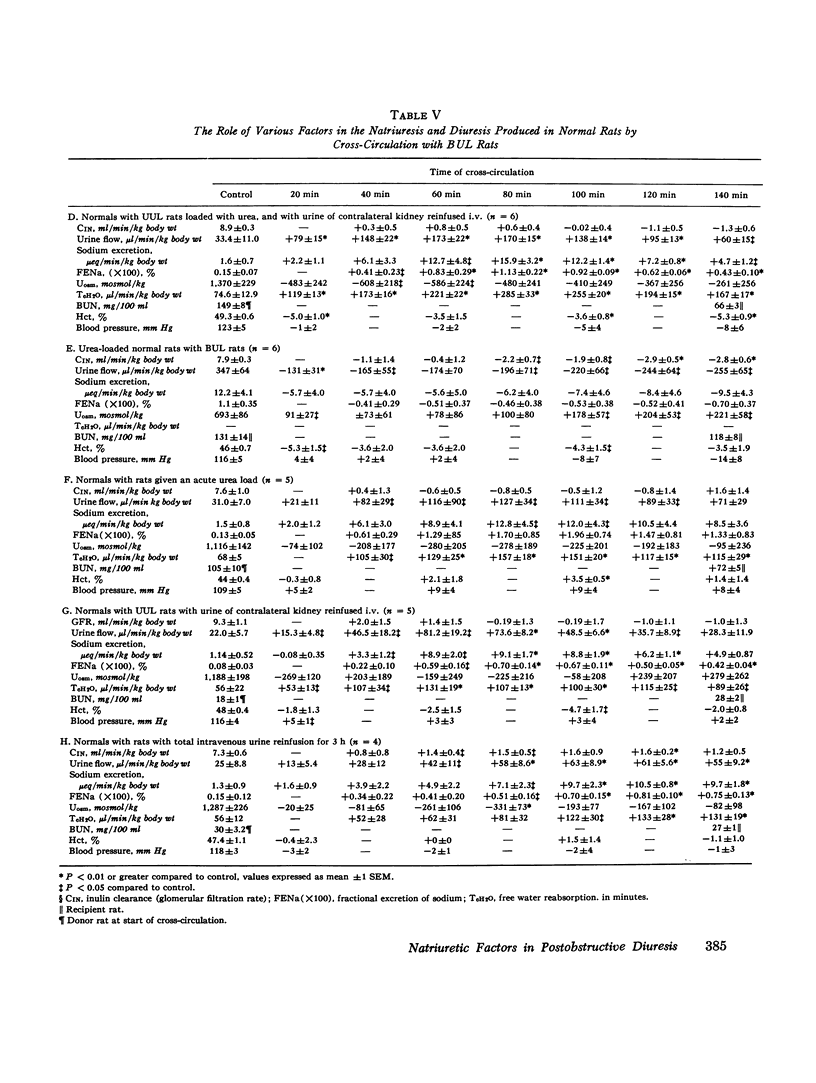
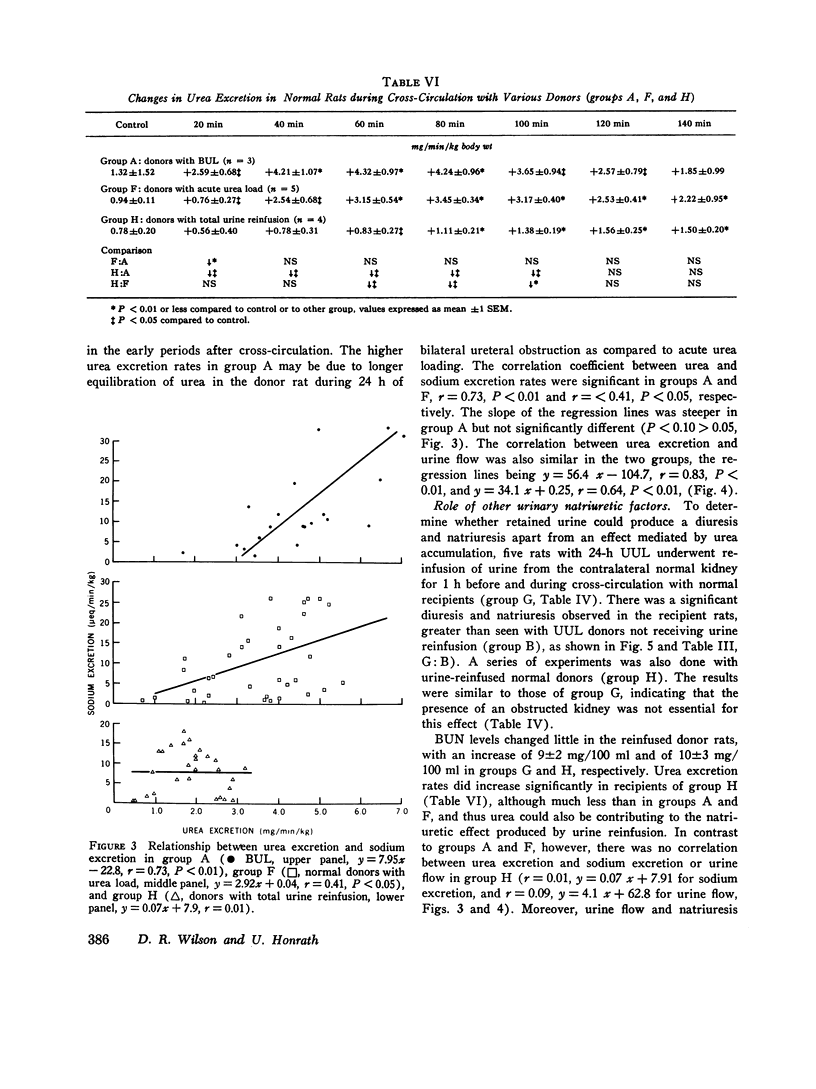
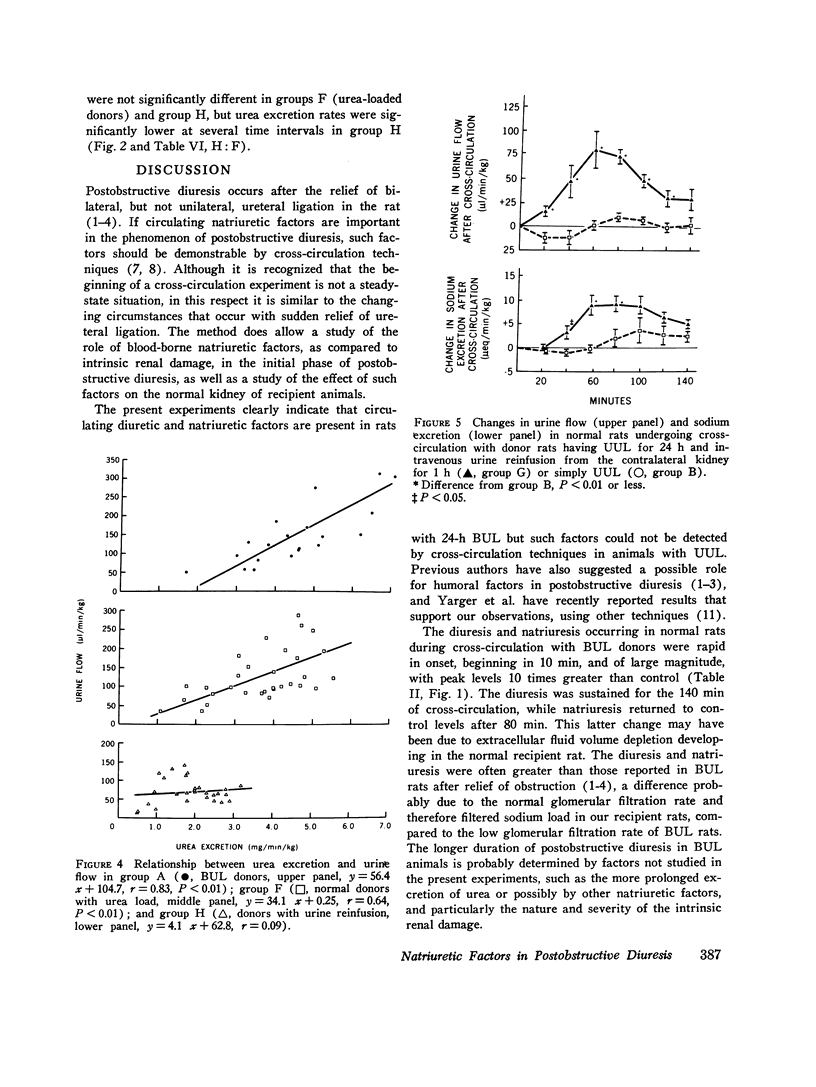
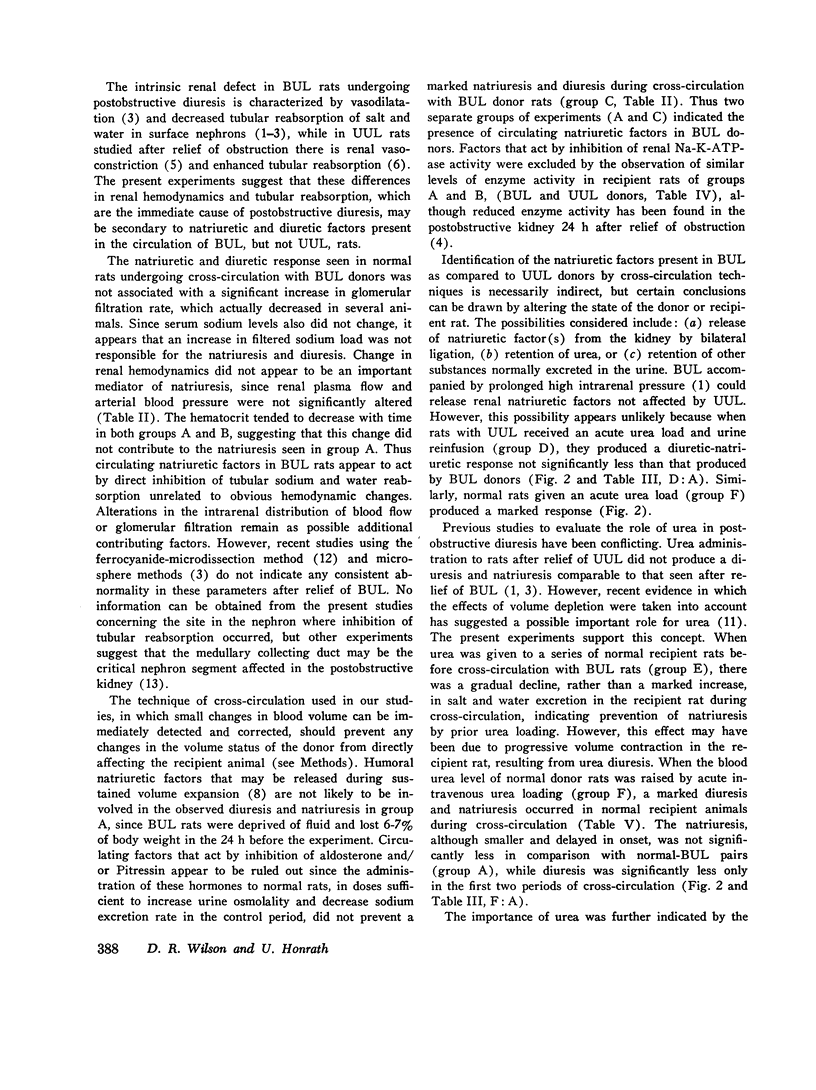
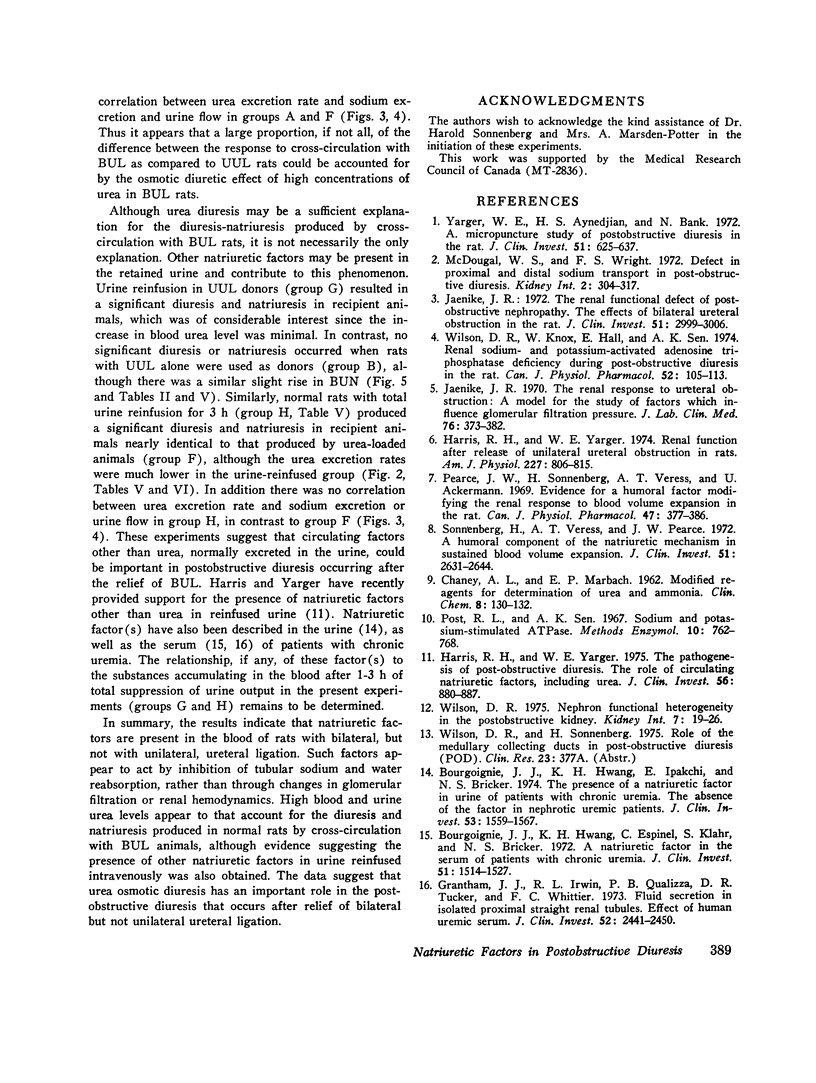
Selected References
These references are in PubMed. This may not be the complete list of references from this article.
- Bourgoignie J. J., Hwang K. H., Espinel C., Klahr S., Bricker N. S. A natriuretic factor in the serum of patients with chronic uremia. J Clin Invest. 1972 Jun;51(6):1514–1527. doi: 10.1172/JCI106948. [DOI] [PMC free article] [PubMed] [Google Scholar]
- Bourgoignie J. J., Hwang K. H., Ipakchi E., Bricker N. S. The presence of a natriuretic factor in urine of patients with chronic uremia. The absence of the factor in nephrotic uremic patients. J Clin Invest. 1974 Jun;53(6):1559–1567. doi: 10.1172/JCI107706. [DOI] [PMC free article] [PubMed] [Google Scholar]
- CHANEY A. L., MARBACH E. P. Modified reagents for determination of urea and ammonia. Clin Chem. 1962 Apr;8:130–132. [PubMed] [Google Scholar]
- Grantham J. J., Irwin R. L., Qualizza P. B., Tucker D. R., Whittier F. C. Fluid secretion in isolated proximal straight renal tubules. Effect of human uremic serum. J Clin Invest. 1973 Oct;52(10):2441–2450. doi: 10.1172/JCI107435. [DOI] [PMC free article] [PubMed] [Google Scholar]
- Harris R. H., Yarger W. E. Renal function after release of unilateral ureteral obstruction in rats. Am J Physiol. 1974 Oct;227(4):806–815. doi: 10.1152/ajplegacy.1974.227.4.806. [DOI] [PubMed] [Google Scholar]
- Harris R. H., Yarger W. E. The pathogenesis of post-obstructive diuresis. The role of circulating natriuretic and diuretic factors, including urea. J Clin Invest. 1975 Oct;56(4):880–887. doi: 10.1172/JCI108167. [DOI] [PMC free article] [PubMed] [Google Scholar]
- Jaenike J. R. The renal functional defect of postobstructive nephyropathy. The effects of bilateral ureteral obstruction in the rat. J Clin Invest. 1972 Dec;51(12):2999–3006. doi: 10.1172/JCI107127. [DOI] [PMC free article] [PubMed] [Google Scholar]
- Jaenike J. R. The renal response to ureteral obstruction: a model for the study of factors which influence glomerular filtration pressure. J Lab Clin Med. 1970 Sep;76(3):373–382. [PubMed] [Google Scholar]
- McDougal W. S., Wright F. S. Defect in proximal and distal sodium transport in post-obstructive diuresis. Kidney Int. 1972 Dec;2(6):304–317. doi: 10.1038/ki.1972.114. [DOI] [PubMed] [Google Scholar]
- Pearce J. W., Sonnenberg H., Veress A. T., Ackermann U. Evidence for a humoral factor modifying the renal response to blood volume expansion in the rat. Can J Physiol Pharmacol. 1969 Apr;47(4):377–386. doi: 10.1139/y69-066. [DOI] [PubMed] [Google Scholar]
- Sonnenberg H., Veress A. T., Pearce J. W. A humoral component of the natriuretic mechanism in sustained blood volume expansion. J Clin Invest. 1972 Oct;51(10):2631–2644. doi: 10.1172/JCI107081. [DOI] [PMC free article] [PubMed] [Google Scholar]
- Wilson D. R., Knox W., Hall E., Sen A. K. Renal sodium- and potassium-activated adenosine triphosphatase deficiency during post-obstructive diuresis in the rat. Can J Physiol Pharmacol. 1974 Feb;52(1):105–113. doi: 10.1139/y74-014. [DOI] [PubMed] [Google Scholar]
- Wilson D. R. Nephron functional heterogeneity in the postobstructive kidney. Kidney Int. 1975 Jan;7(1):19–26. doi: 10.1038/ki.1975.3. [DOI] [PubMed] [Google Scholar]
- Yarger W. E., Aynedjian H. S., Bank N. A micropuncture study of postobstructive diuresis in the rat. J Clin Invest. 1972 Mar;51(3):625–637. doi: 10.1172/JCI106852. [DOI] [PMC free article] [PubMed] [Google Scholar]


